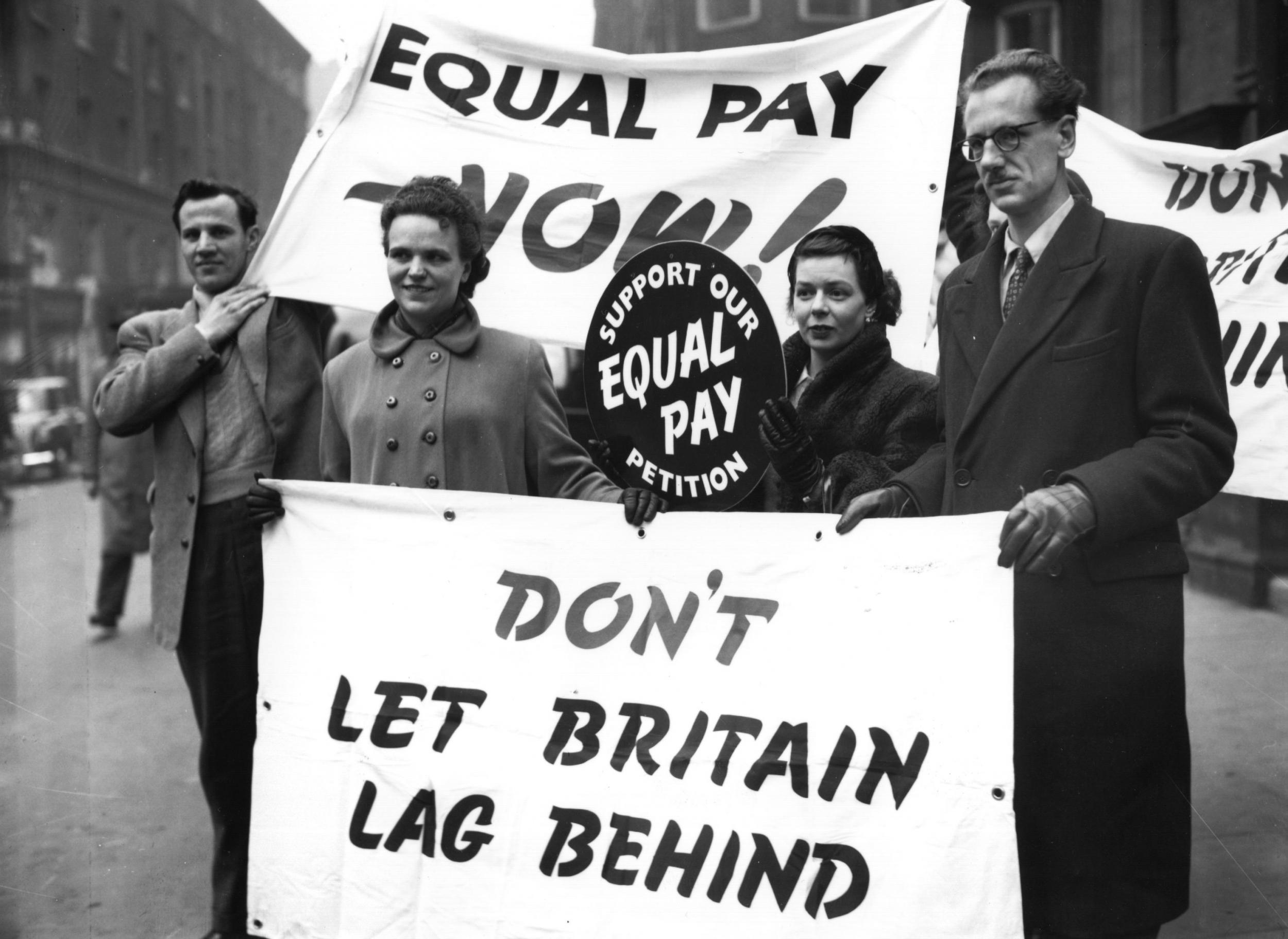Equal Pay Day: Seven reasons you should still be worried about the gender pay gap
Gender inequality in employment continues - 45 years after legislation designed to ensure women's pay matched men's

Your support helps us to tell the story
From reproductive rights to climate change to Big Tech, The Independent is on the ground when the story is developing. Whether it's investigating the financials of Elon Musk's pro-Trump PAC or producing our latest documentary, 'The A Word', which shines a light on the American women fighting for reproductive rights, we know how important it is to parse out the facts from the messaging.
At such a critical moment in US history, we need reporters on the ground. Your donation allows us to keep sending journalists to speak to both sides of the story.
The Independent is trusted by Americans across the entire political spectrum. And unlike many other quality news outlets, we choose not to lock Americans out of our reporting and analysis with paywalls. We believe quality journalism should be available to everyone, paid for by those who can afford it.
Your support makes all the difference.The overall UK gender pay gap is 19.1 per cent, meaning a woman on average earns 80p for every £1 earned by a man - despite the Equal Pay Act coming into force in 1970.
November 6 is Equal Pay Day – essentially the day in the year that women stop earning, due to the gender pay gap; six and a half weeks before the end of the year. Below are seven reasons we should still be worried about gender inequality in UK employment.
1. Only 31 per cent of the UK’s cabinet ministers are female
There are only seven females cabinet ministers in the UK's government - while Canada’s new prime minster, Justin Trudeau, has chosen the country's first cabinet with equal numbers of men and women. When asked to explain the rationale behind his decision, Mr Trudeau simply replied: “Because it’s 2015”.
2. The average UK boss is more likely to be male
According to a survey from manufacturer, Stormline, the average UK boss is a 54-year-old white man, named Andrew. The survey looked at the country’s top 50 private companies’ bosses and found there were only six women.
3. UK’s female billionaires only make up 4 per cent
Fewer than four per cent of the UK’s millionaires are women, making it the country with the 10th lowest percentage of female billionaires. South America is the continent with the most female billionaires, with 33 per cent in Chile, while Switzerland is just behind with 29 per cent. The Approved Index of the countries with the most female billionaires is based on the Forbes’ list of billionaires.
4. Female actors are paid less in entertainment
A hack of Sony Pictures' emails revealed Jennifer Lawrence was paid seven per cent of the film American Hustle’s profits, while Bradley Cooper and Christian Bale were paid nine per cent.
Lawrence was paid less despite playing a starring role and winning an Oscar. Other female actors, including Meryl Street and Emma Thompson, have spoken about misogyny in the industry.
5. It will be another 70 years until the gender pay gap closes
A UN report shows women across the world earn 77 per cent of the amount paid to men, a figure that has improved only three percentage points in 20 years. At this slow rate, the gender page gap will not be closed for another 70 years. The report is from the UN’s International Labour Organisation (ILO).
6. Women in male-dominated roles
Only six per cent of the engineering work force is female, according to stats from the Women’s engineering society.
In 2012, 79 per cent of those who took A-Level physics were male, meaning fewer women would go on to study engineering at university. Last August, women sought to raise the profile of female engineers by posting photos on social media of them holding signs saying #ILooLikeAnEngineer.
7. FTSE 100 firms appoint more women to their boards but smaller firms have way to go
Britain’s top companies have made enormous progress on gender diversity by doubling the number of female directors. Now women account for 23.5 per cent of the FTSE 100 board members, up from12.5 in 2011, according to Lord Davies, the former trade minister. This means companies are on track to meet their target of 25 per cent in 2015.
However, smaller companies still lag behind, with just 18% of women directors on the boards of FTSE 250 firms - albeit an improvement on the figure of 7.8% in 2011.
Join our commenting forum
Join thought-provoking conversations, follow other Independent readers and see their replies
Comments